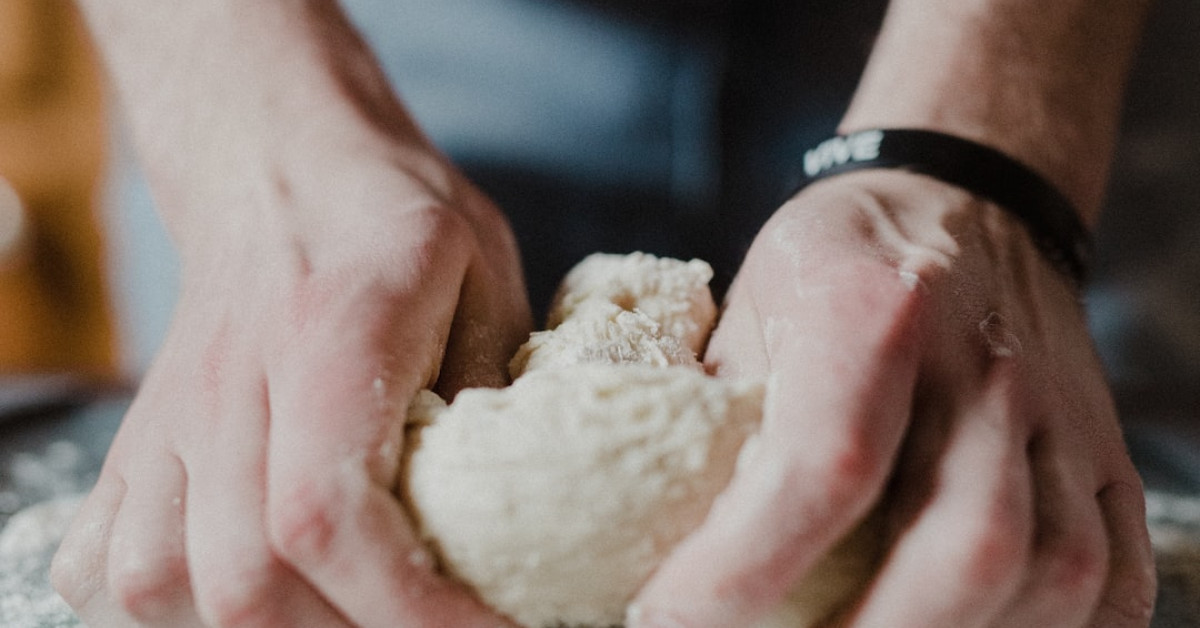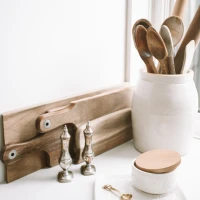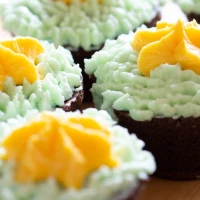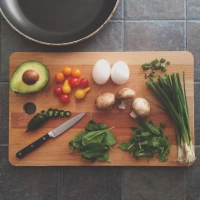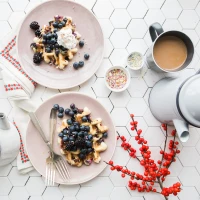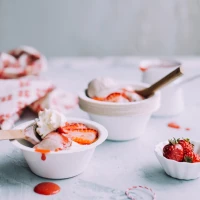Baking is not just an art; it’s a science where precision and creativity meet to create delicious and visually appealing delights. Whether you’re an amateur baker looking to improve your skills or a seasoned pro eager to refine your craft, understanding the essential techniques of baking is fundamental to producing top-quality confections. In this comprehensive guide, we’ll delve into over 55 key baking techniques and methods to help you rise to the apex of patisserie prowess. Get ready to transform flour, sugar, and butter into scrumptious pastries, cakes, and breads with the finesse of a baking virtuoso.
The Fundamentals of Flawless Baking
Before you preheat your oven or measure out your ingredients, ensure you have a firm grasp on the essential basics that form the backbone of all baking endeavors.
Understanding Baking Ingredients
Each element in a baking recipe plays a specialized role, and mastering the function of each can have a profound impact on your end product.
- Flour: Provides structure. Use all-purpose flour for a good balance or bread flour for chewier, more elastic doughs.
- Sugar: Sweetens and helps with browning and tenderizing. Granulated sugar is standard, but brown sugar adds moisture and a caramel flavor.
- Butter: Adds richness and can be used softened, melted, or cold, depending on the desired texture.
- Eggs: Bind ingredients and add moisture and richness. Take note of whether a recipe calls for whole eggs, whites, or yolks specifically.
- Leavening Agents: Baking soda and baking powder produce the carbon dioxide that makes baked goods rise.
Measuring to Perfection
Precision is key, so make sure your measurements are accurate.
- Use a digital scale for the most precise results.
- If using measuring cups, spoon ingredients in and level off with a knife.
- Liquids should be measured with a spout-equipped measuring cup, checking at eye level.
Mixing Techniques Matter
The way you combine your ingredients can make or break a dish.
- Creaming: Thoroughly mix butter and sugar until light and fluffy for leavening baked goods.
- Folding: Gently incorporating delicate mixtures like whipped cream or egg whites to maintain their airiness.
- Sifting: Aerates flour and other dry ingredients, ensuring a smooth, lump-free mixture.
Perfecting Pastries and Pies
Pie crusts and pastries demand dexterity and an understanding of fat distribution.
Creating Flaky Layers
Mastering the art of the perfectly flaky pastry begins with maintaining butter chunks in your dough. When these melt in the oven, the water content turns into steam, separating layers of dough for that coveted flake.
- Cut cold butter into flour until you achieve pea-sized crumbs.
- Refrigerate dough before rolling to keep butter from melting prematurely.
Blind Baking for Better Bases
To prevent a soggy bottom, blind bake your crust using pie weights or dried beans to hold its shape before adding wet fillings.
Decorative Edges for Enhanced Appeal
Elevate your pies with decorative crimps and lattice tops—aesthetic touches that hint at the savory goodness inside.
Crimping Techniques
- Fork Crimp: Press the tines of a fork along the edge for a simple, classic finish.
- Finger Crimp: Pinch the dough between your fingertips to create a wave pattern.
Elevate Your Cake Making
Creating cakes can seem daunting, but mastering a few key techniques will ensure a show-stopping centerpiece for any occasion.
Sponges and Layer Cakes: Air is Everything
When it comes to cakes, air is your ally.
- Beat eggs and sugar together until the mixture is pale and substantially increased in volume.
- Fold in dry ingredients gently to keep the air in the batter.
Buttercream Basics
A smooth buttercream is the mark of a skilled baker.
- Use room temperature butter for easier incorporation of other ingredients.
- Begin with beating butter alone, then gradually add powdered sugar, followed by liquids like vanilla extract or milk.
Stacking and Frosting
Stacking layers evenly and frosting with confidence come with patience and practice.
- Apply a crumb coat: a thin layer of frosting to seal in crumbs before the final coating.
- Chill the cake after the crumb coat to set the frosting, ensuring a smoother finish.
Fillings and Flavor Enhancements
Boost the taste and aesthetic appeal of your cakes with luscious fillings and innovative flavorings.
- Curds and ganaches: add rich and tart layers between cake slices.
- Infused simple syrups: brush on layers to keep the cake moist and add a hint of extra flavor.
Bread Baking Break-Down
Fermentation and Proofing
The rise of your bread is as crucial as the taste.
- Long, slow fermentations at lower temperatures improve flavor and texture.
- Proper proofing allows for adequate gas production and expansion, yielding an ideal crumb.
Kneading to Know-how
Kneading develops gluten, providing the structure necessary for bread to capture the gases from yeast.
- Hand-knead on a floured surface, or use a stand mixer with a dough hook.
- Knead until the dough is smooth, elastic, and passes the windowpane test—when a small piece of dough stretches thin enough to let light pass through without tearing.
Scoring a Success
Scoring (or slashing) controls the direction in which bread expands in the oven.
- Use a lame or sharp knife to make shallow cuts in the surface of proofed dough.
- Slashes should be decisive and swift, with the angle and depth affecting how the bread will open up.
Finishing Touches: Decoration and Presentation
Mastering the Art of Icing and Glazes
Streamlined icing techniques can turn a good bake into a great one.
- Piping: Use a steady pressure to create smooth lines and decorative shapes.
- Glazes: A thin, runny icing brushed or poured over baked goods for a sweet finish and a glossy sheen.
Chocolate Work
Working with chocolate requires care to ensure a glossy and crisp finish.
- Temper chocolate to stabilize it for a shiny appearance and a satisfying snap.
- Create chocolate garnishes like curls or shards by spreading tempered chocolate thinly over a cold surface and shaping it before it fully sets.
Edible Decorations
Edible flowers, fruit, and herbs can add a natural elegance to your baked creations.
- Fresh fruit: Provides a burst of color and a juicy complement to sweet baked goods.
- Herbs: A sprig of mint or thyme can lend an aromatic touch to your desserts.
Gold Leaf for That Opulent Finish
For a touch of luxury, apply gold leaf in small touches to elevate your presentation.
A Comparison Chart for Commonly Used Ingredients
| Ingredient | Purpose in Baking | Notes |
|---|---|---|
| Flour | Structure and Stability | Types of flour can greatly affect texture. |
| Sugar | Sweetness, Browning, Texture | Different types provide unique flavors and moisture content. |
| Butter | Richness, Flavor, Leavening | Cold for pastry, room temperature for creams and icings. |
| Eggs | Binding, Structure, Richness | Whole eggs add stability, whereas yolks contribute to tenderness. |
| Leavening Agents | Rise and Airiness | Ensure freshness for the best results. |
Conclusion: Elevate Your Baking Game
Armed with these 55+ essential techniques, you’re now poised to create baked masterpieces that are as delightful to the eye as they are to the palate. Remember, becoming a baking pro is a journey of trial, error, and triumph. With each batch of cookies, loaf of bread, or decadent cake, you’ll hone your craft, understand your ingredients, and refine your methods. Now, preheat your oven, don your apron, and get ready to astound friends, family, and fellow baking enthusiasts with your newfound prowess in the sweet art of baking. Bon appétit, and happy baking!
